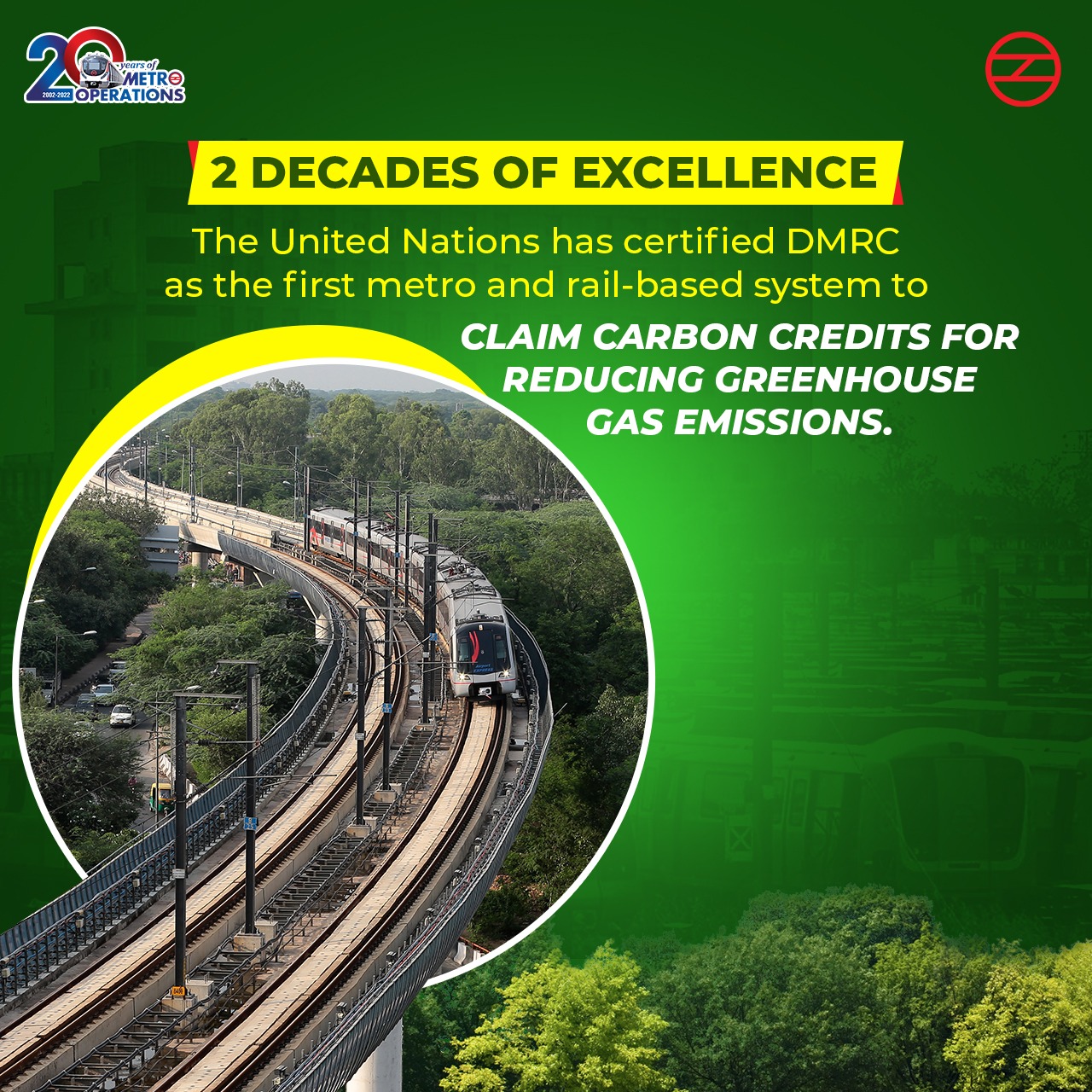NEW DELHI: It has been 20 years of the Delhi Metro, 20 years of a public transport system that has been the great class leveller and transformed the way Dellhiites work, party and manage their hectic lives in a city’ that stretches across three states.
As 2022 winds down, it’s also time to track the past, present and future of a lifeline that connects far corners of the sprawling National Capital Region (NCR) comprising Delhi, of course, and also its thriving suburbs Gurgaon and Noida, as well as industrial cities Ghaziabad and Faridabad.
It started in December 2002 with a corridor of just 8.2 km spanning six stations on the Red Line and has now grown to over 390 km.
The network span comprises 286 stations (including the Noida Greater Noida Metro Corridor and Gurgaon’s Rapid Metro).
The multi-hued network now with lines in yellow, blue, green, grey and in multiple shades of pink, including magenta and violet transformed the landscape of the city and boosted its transport infrastructure. In 2023, the Delhi Metro Rail Corporation’s focus will be on its Phase-IV project, with some sections of two of the three priority corridors expected to be opened in the latter half of the year.
As it looks ahead, several Delhiites look back at the years of the public transport as bringing in an element of safety in a city notorious for being unsafe for women and bridging divides with even the richest known to hop on to a train to navigate traffic and distances.
It has opened up avenues for work, enabling women whose families were reluctant to let them travel by buses, to join the workforce and given others the option of travelling late at night. The airconditioned metros have also opened up distant corners of the city for commuters.
Simran Sharma, in her late 20s, for instance, travels for work between Krishna Nagar in east Delhi and Noida, said Delhi Metro has made travel safer for women and has been a boon for those who may not have ventured out much earlier.
“Every train has a coach reserved for women, and there are some seats marked for women, as also for the elderly riders in other coaches, which is very good. Many more women are travelling because of the metro,” she told PTI.
At present, the DMRC is undertaking construction work on 65.2 km of the three priority corridors, spanning 45 stations — Janakpuri West-RK Ashram Marg (28.92 km), Majlis Park-Maujpur (12.55 km), which are extensions of the already operational Magenta Line and Pink Line respectively, and the Tughalakabad-Aerocity (23.62 km) that is being built as a Silver Line and will connect the operational Violet Line and Airport Line.
Work on Phase-IV had begun in December 2019 with a groundbreaking ceremony, but was hit after the Covid outbreak in March 2020.
After struggling with the impact of the pandemic and the lockdown its had induced, resulting in revenue losses, the urban transporter is now seeking to recover lost ground while forging a future of transport that is more seamless, comfortable and tech-driven with a focus on indigenisation.
Delhi Metro “does not foresee any major delay” or significant cost overrun in the timelines of the Phase IV project. Some of the sections of two of the three priority corridors are planned to be opened by March 2023, then DMRC chief Mangu Singh told PTI in an interview on March 31, 2022.
He had also said the final operationalisation of the entire Phase-IV project might get stretched to March 2025.
Delhi Metro began commercial operations on December 25, 2002, a day after then prime minister Atal Bihari Vajpayee inaugurated its first stretch.
To mark the completion of two decades of its operations, the DMRC ran a special train on December 24 on the same route.
On November 19 this year, Delhi Metro achieved a major construction milestone in Phase-IV with the completion of tunnelling work between Krishna Park Extension and Keshopur on the Janakpuri West-R K Ashram Marg corridor.
If 2022 was memorable for Delhi Metro for its 20th anniversary, it also gave many travellers anxious moments with services being affected for long hours on many days on various sections of several corridors.
On March 17, for instance, services were delayed for nearly two hours on three corridors — violet, green and pink lines — of the Delhi Metro due to a technical glitch. Many commuters vented their frustration on Twitter and shared pictures of passengers standing in long queues awaiting arrival of trains at many stations.
On June 9, services on its Blue Line were delayed for over two hours due to a technical snag. Two days later, Violet Line services were delayed for nearly two hours. With many lakhs travelling each day, the chaos was immediate.
In November, the Delhi Metro signed an MoU with Bharat Electronics Limited (BEL) for the development of an indigenous Communication Based Train Control system (i-CBTC), in consonance with the ‘Make in India’ initiative of the government of India.
The DMRC has faced and overcome numerous engineering challenges in its 20-year journey. In September, a film titled Surmounting Challenges related to the third phase of its expansion, and produced by the DMRC, won the best promotional film award (in non-feature film category) at the 68th National Film Awards 2020.
The year also saw the transition of leadership at the DMRC, with Vikas Kumar taking over as its third Managing Director on April 1, as Mangu Singh passed on the baton to him.
Delhi Metro in 2022 also made aggressive bids for consultancy services for Indian and foreign metro projects including those in Israel, Egypt, Mauritius, Bahrain and Bangladesh, officials said.
Source: Press Trust of India



